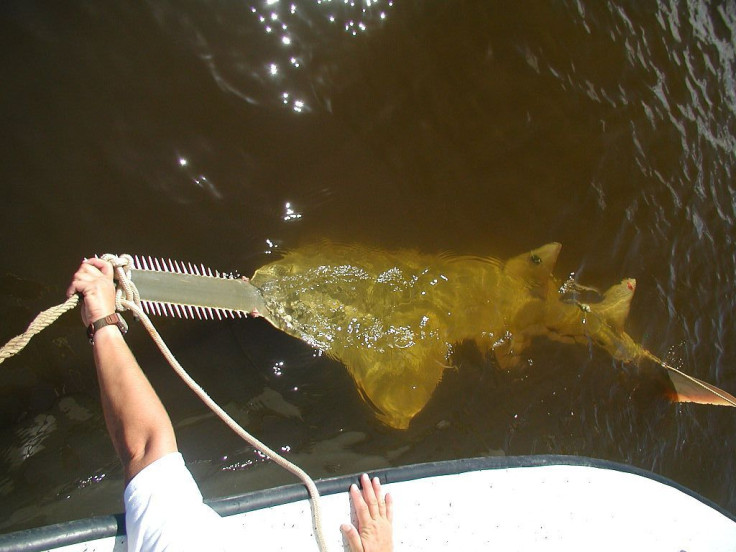Critically Endangered Sawfish Resort To ‘Virgin Births’ To Avoid Extinction

A group of scientists has discovered that critically endangered sawfish in Florida are experiencing “virgin births” -- reproducing without mating. Nearly 3 percent of the sawfish living in an estuary in the state are apparently the products of asexual reproduction, representing the first solid evidence of such process in the wild for any vertebrate animal.
Scientists previously observed asexual reproduction among female birds, reptiles and sharks living in captivity without a male partner. But this was the first time when instances of such reproduction were discovered in the wild. The virgin-born offspring, also called “parthenogens,” of smalltooth sawfish live alongside other sawfish produced through sexual reproduction, suggesting that virgin births may be more common in nature than previously thought, the scientists said in a study, published in the journal Current Biology on Monday.
“We were conducting routine DNA fingerprinting of the sawfish found in this area in order to see if relatives were often reproducing with relatives because of their small population size,” Andrew Fields of Stony Brook University in New York, and the study’s lead author, said in a statement. “What the DNA fingerprints told us was altogether more surprising; female sawfish are sometimes reproducing without even mating.”
According to the scientists, smalltooth sawfish may be the first entire family of marine animals to become extinct because of overfishing and coastal habitat loss. The species, which has disappeared from most of the places in the Atlantic where it was common a century ago, is now mainly found in a handful of locations in southern Florida.
“Vertebrate animals that we always thought were restricted to reproducing via sex in the wild actually have another option that does not involve sex,” Demian Chapman, a marine biologist at Stony Brook University, and the study’s co-author, told Live Science. “Rare species, like those that are endangered or colonizing a new habitat, may be the ones that are doing it most often. Life finds a way.”
Although parthenogen offspring are malformed or die early, a group of seven parthenogen sawfish, examined by scientists as part of the study, was in perfect health. The fish were normal size for their age, the scientists said, adding that all parthenogen sawfish were tagged and released back into the wild.
“It is possible that parthenogenesis is most often expressed in wild vertebrates when the population is at very low levels and the animals have difficulty finding one another,” Fields said. “Parthenogenesis could help endangered species like sawfish dodge extinction for a little while, but it should also serve as a wakeup call that we need serious global efforts to save these animals.”
© Copyright IBTimes 2025. All rights reserved.






















